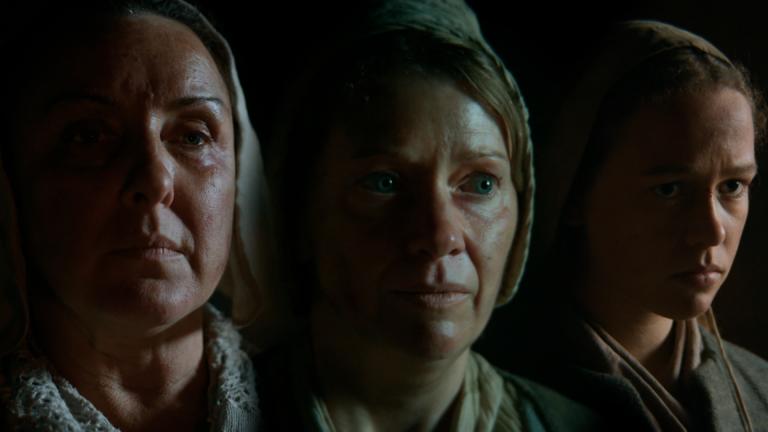
Read more about Popular Culture

It’s fair to say that witches are now firmly ingrained in popular culture. It’s not hard to reel off a list of famous fictional witches, from the Wicked Witch of the West to Sabrina the Teenage Witch.
In modern times, many witches are depicted as virtuous or at least of ambiguous morality. However, centuries ago, witchcraft was deemed not only real but also used strictly for nefarious purposes.
In the late 16th and early 17th centuries, thousands of innocent women across Europe were found guilty of witchcraft and sentenced to death. Curiously, the English county of Essex saw an especially high number of women accused of sorcery.
It’s something Rylan Clark — a famous resident of Essex — is only too aware of. In new Sky HISTORY series Witches of Essex, he takes a fresh look at how the area got caught up in the ‘witch craze’.
He’s joined by anthropologist Professor Alice Roberts, but what tantalising revelations might the two uncover? Witches of Essex starts Tuesday 14 October 9pm on Sky HISTORY and HISTORY Play.
Why did witch-hunting activity intensify during the Middle Ages? One contributing factor is thought to be the publication of the Malleus Maleficarum (the ‘Hammer of Witches’) in 1486.
Written by German Catholic clergyman Heinrich Kramer, this treatise argued that witchcraft indeed existed — and suggested how suspected witches could be prosecuted.
In the 1540s, the English parliament made witchcraft a crime punishable by death. England passed further Witchcraft Acts in 1563 and 1603. These latter Acts slightly redefined the punishments to be meted out to those found guilty of witchcraft.
However, those who were found guilty could still face brutal, often fatal consequences — as the following Essex witch trials illustrate.
Of all England’s counties, none executed more alleged witches than Essex. One of the first to be handed a death sentence was Agnes Waterhouse, who hailed from the Essex village of Hatfield Peverel.
In the first Witches of Essex episode, Rylan and Alice open a cold case investigation into Agnes’s trial, which took place in Chelmsford in 1566.
Agnes confessed to having a ‘familiar’ (the contemporary word used to refer to a witch’s demonic animal companion). In this case, the familiar was a cat by the name of ‘Sathan’ (no, that’s not a misspelling).
In 1582, 14 women from the village of St Osyth were accused of witchcraft. The most famous of these today is Ursula Kemp, a poor midwife whose friendship with fellow peasant Grace Thurlowe came to an acrimonious end.
In the second episode, Rylan and Alice learn more about the story. When Grace’s daughter died in bizarre circumstances, Ursula was suspected of using sorcery to orchestrate her death.
During the witch craze, witchcraft would be routinely blamed for many unfortunate occurrences, from bad weather to failed crops. Naturally, though, witchcraft-induced murder was considered especially heinous.
In court, Ursula confessed to having four familiars, with one of them ultimately deemed responsible for the death of Grace’s child.
Today, Ursula’s eventual fate is recorded on a plaque attached to a St Osyth house thought to have served as a medieval prison. According to the plaque, Kemp 'was imprisoned here before being hanged as a witch in 1582'.
The man in question was Matthew Hopkins, who teamed up with colleague John Stearne to hunt for witches during the English Civil War.
In Witches of Essex, Rylan and Alice see how Hopkins launched his reign of terror in the seaside town of Manningtree.
Between 1644 and 1647, Hopkins and Stearne investigated suspected witches through various dubious means. These included inspecting women’s bodies for signs of the ‘devil’s mark’. A mole or birthmark could be regarded as a sign that a woman was in league with the devil.
The ‘Witchfinder General' wound down his witch-hunting pursuits after they drew increasing criticism.
England and Scotland had separate laws against witchcraft right up until 1736, when the Witchcraft Act 1735 finally repealed them. By then, many influential figures did not even consider witchcraft to be possible.
However, anti-witchcraft laws in other countries were repealed at different times. According to estimates, about 90,000 people (not all of them women) in early modern Europe were accused of witchcraft, with about half executed.
Keen to learn more about the European witch craze? One surefire way to keep yourself informed about future historical documentaries is to subscribe to the Sky HISTORY Newsletter.